–Written by Marusa Zamorano, MD, General Surgeon Specialised in Abdominal Surgeries, endoscopies and proctology–
Looking for the best scar treatments? If you’re anything like us, you’ve probably earned a scar or two over the years. Whether it’s from that misadventure while hiking or that unexpected surgical procedure, we all have our stories.
And speaking of stories, we can say that we have many of them linked to scars. Daniel with few major abdominal surgeries and Maruša from c-sections and a bad mountain bike accident. Leaving her with a scar on her face.
As a woman, even more exposed to the so called “standards of beauty”, a big scar on the face is not a minor thing.
With the fact of Maruša being a surgeon, the quest of finding possible options to make our scars look less visible was on and luckily we found some good answers to share with you all.
So here is our comprehensive guide on this interesting topic and even better when there are possible scar treatments.
Understanding Scars
What Are Scars?
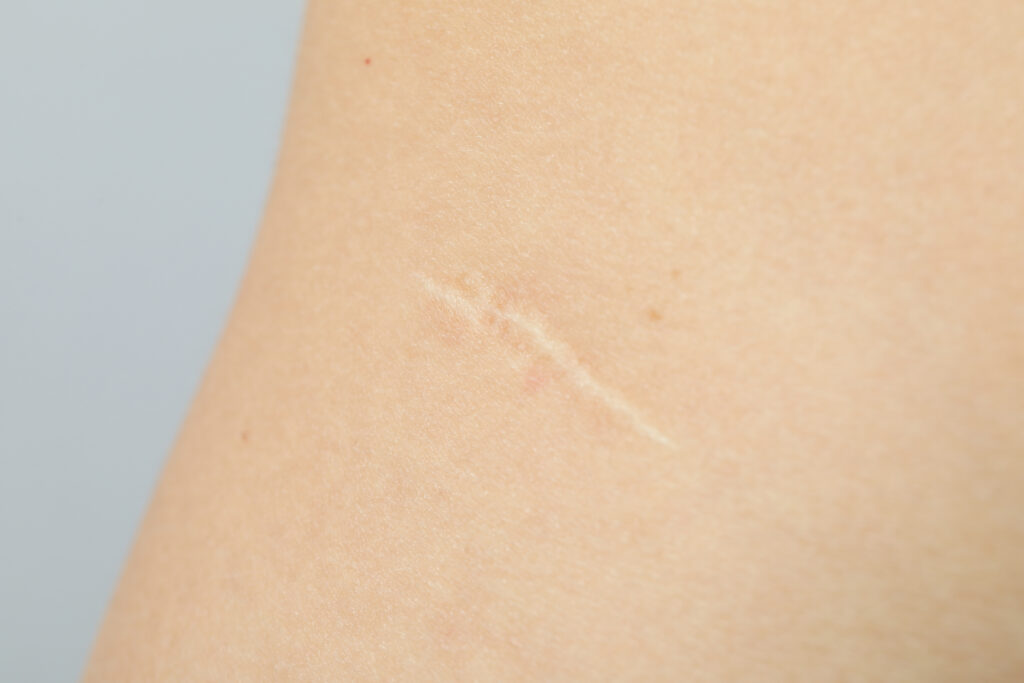
Simply put, scars are the body’s way of repairing damaged skin. When the skin suffers an injury, it immediately goes into repair mode, producing new tissue to pull the wound together.
This new tissue primarily consists of collagen, a protein that acts as a protective barrier against infections.
Different people have scars that look different. While some scars might be large and noticeable, others might just be small marks that are barely visible. Interestingly, individuals with certain skin tones, such as those of African, Asian, or Hispanic descent, as well as red-haired individuals, are more prone to keloid scars. These are raised scars that can actually grow beyond the original injured area.
But here’s the silver lining – not every scar needs treatment. And for those that do, many treatments are available!
How Does A Scar Look Like?
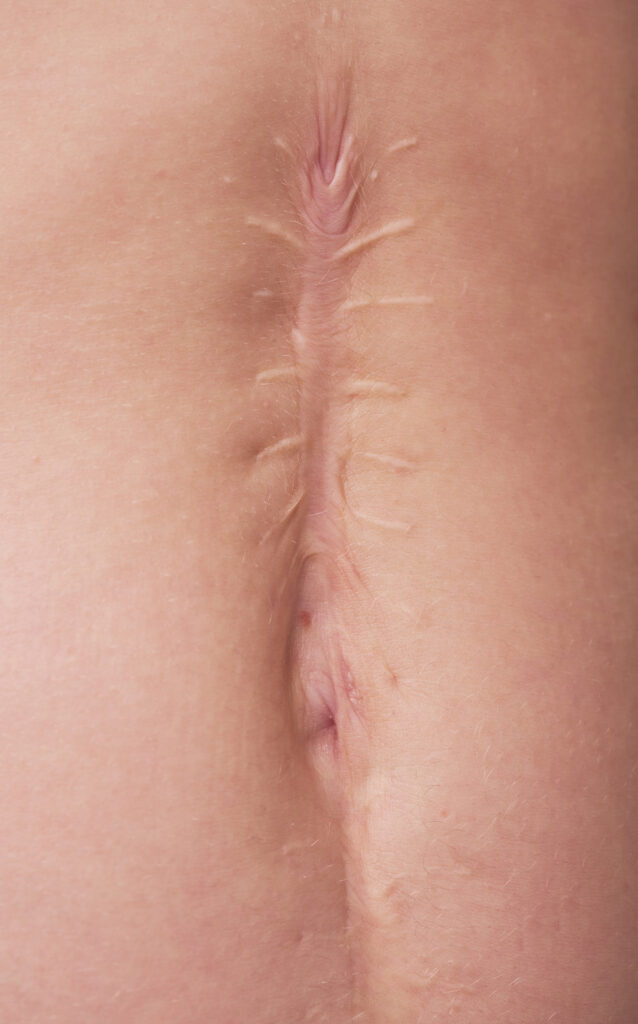
When a scar first makes its appearance, it might look pink or red, especially on lighter skin tones. Over time, this hue fades, making the scar either slightly darker or lighter than the surrounding skin.
People with darker skin might see their scars appearing as dark spots. Sometimes, you might feel an itch or a slight pain, which is totally normal.
Several factors influence a scar’s appearance:
· What caused the scar in the first place? Was it surgery, a burn, or acne?
· The wound’s size, severity, and location.
· The treatment given immediately after the wound, like stitches.
· Personal factors like age, genetics, and overall health.
Types of Scars
1. Contracture: Usually forming post a burn, this scar tightens the skin. It can sometimes restrict movement if it affects muscles, nerves, or is over a joint.
2. Depressed (atrophic): Sunken in appearance, they are often results of chickenpox or acne. You’ll often find them on the face. Fun fact: They’re also called ‘ice pick scars’.
3. Flat: Initially raised but flattens out over time. They usually have a pink or red shade initially.
4. Keloids: Raised scars that grow beyond the injured area.
5. Raised (hypertrophic): These are raised scars that you can feel, but they don’t grow beyond the injured area.
6. Stretch marks: These form when skin expands or shrinks rapidly. Common during pregnancy, puberty, or significant weight fluctuations.
7. Internal scars: Scar tissue isn’t just on the outside; it can form inside our bodies too, resulting from surgeries or certain health conditions.
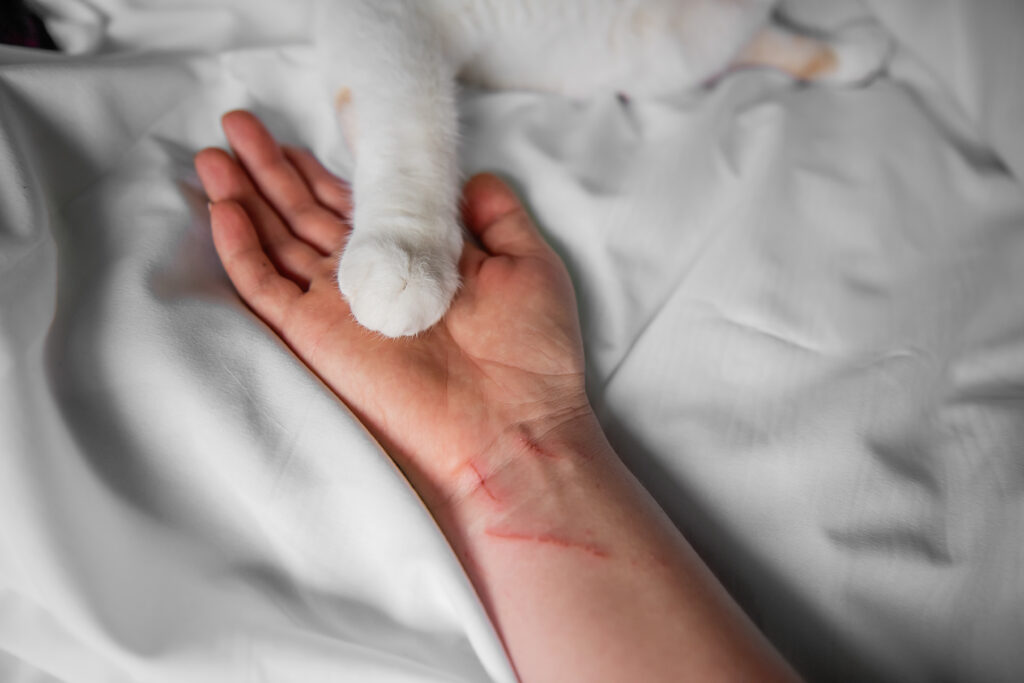


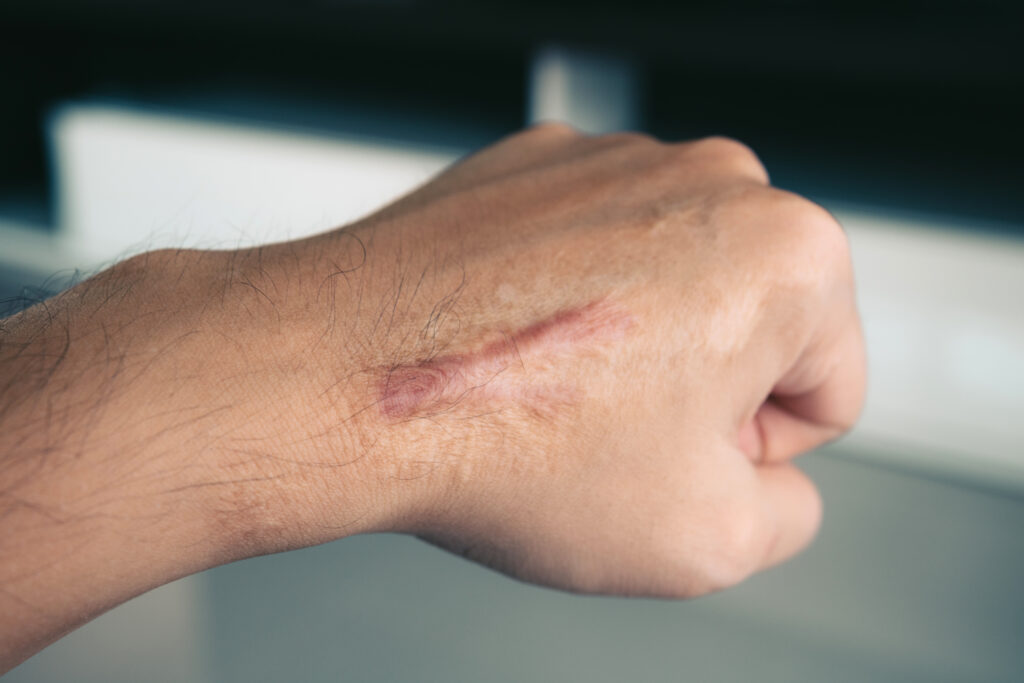
Why Do Scars Occur?
At its core, scarring is the body’s way of healing. Collagen, the primary component of scar tissue, plays a key role in skin repair, sealing any open areas, protecting against infections, and ensuring the skin remains the fantastic barrier it’s meant to be.
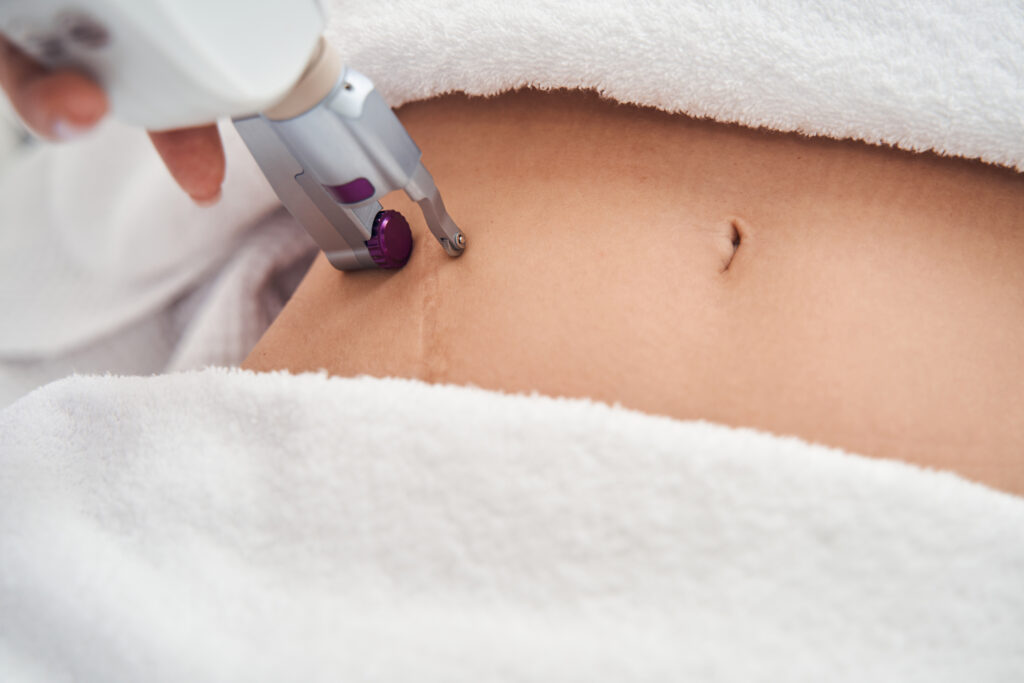
Diagnosis and Tests
Generally, you can spot a scar yourself. If it’s causing issues, a healthcare provider can evaluate its type, cause, and recommend scar treatments accordingly.

Recommendations for Patients after Surgeries for a proper Wound Care
Wounds need to rest during healing. After surgery, avoid physical exertion and movements that would stretch the wound. Take care of a balanced diet that should contain enough protein and vitamins.
If the wound is on a limb, elevate it and rest. In case of pain, avoid painkillers that can cause bleeding (like aspirin). The first dressing of the wound must be performed in accordance with the instructions of the surgeon.
Unless otherwise instructed, perform the first dressing within 72 hours at your chosen doctor. Subsequent dressings should be performed usually every 2-3 days.
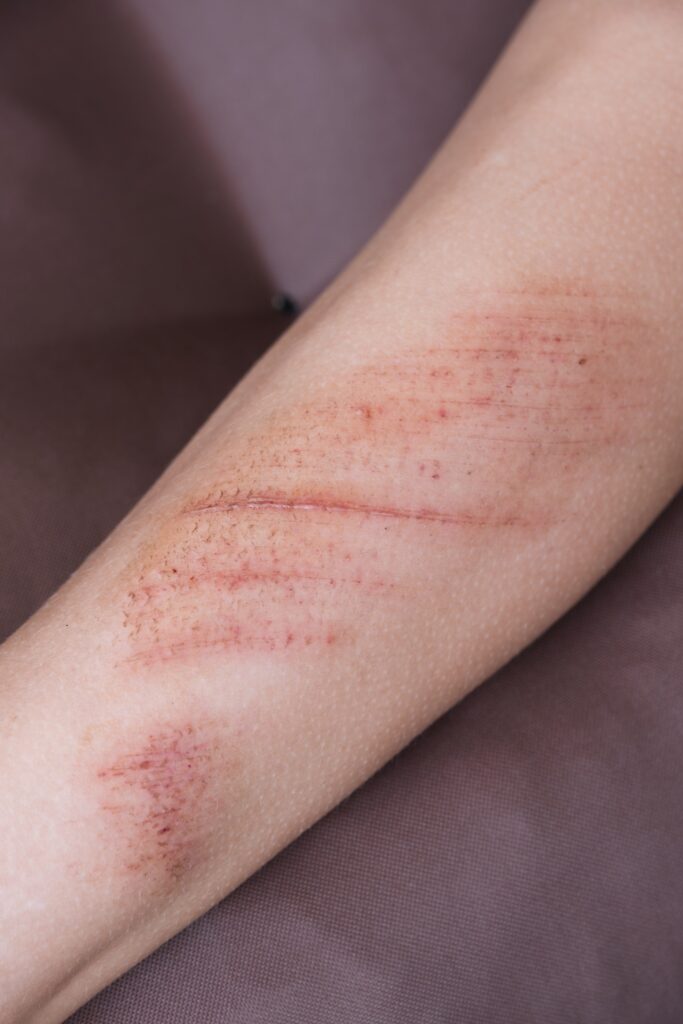

The appropriate time to remove stitches or staples is between the 5th and 15th day after surgery. The doctor who performed the surgery should tell when you should remove them.
Factors affecting the time to remove sutures and staples are: location and orientation of the wound on the body, age of the patient, presence of early complications and some chronic diseases.
After removing the stiches, application of adhesive tapes / strips is important. Installing adhesive strips contributes to better final aesthetic results. Usually surgeons recommend to apply them 2-3 weeks after stitch removal.
For scars younger than one year
Usage of Scar care creams is recommended. There are many on the market. The most common active ingredients in creams are: vitamin A, vitamin D, vitamin E, onion extract, green tea, aloe vera and silicone.
Of all the active ingredients listed, only scar care products containing silicone (creams and silicone patches) have clearly proven effects in the literature.
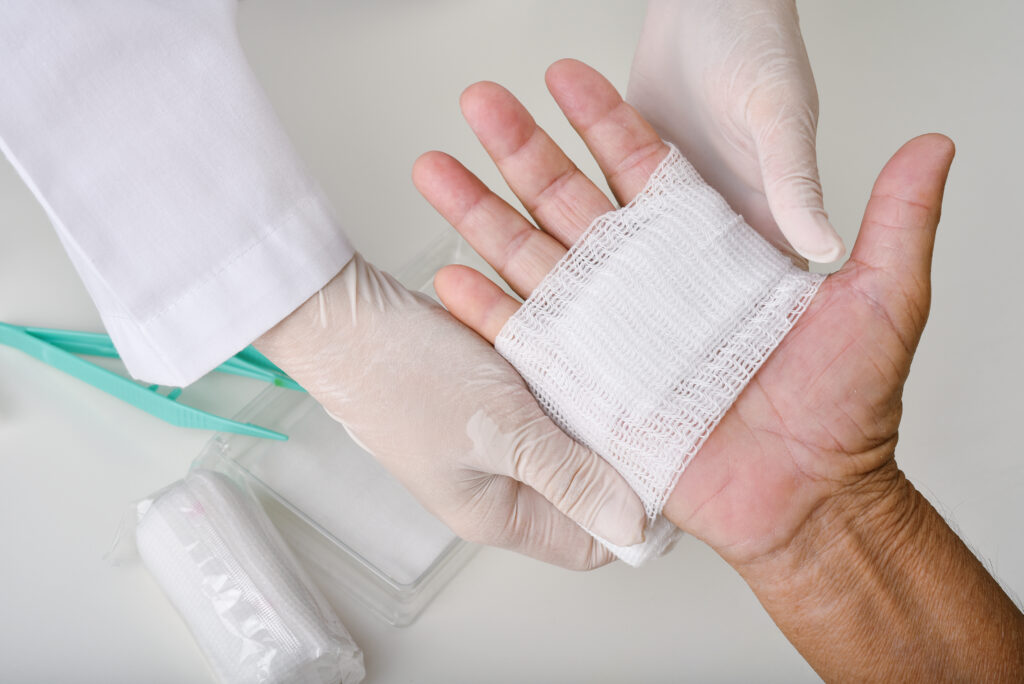
Application of silicone should begin the second week after the operation for a period of three months and at least 8 hours a day. Silicone scar care creams can be combined with silicone patches.
Scar massage is also a very important therapy as it helps the scar to heal better. You can use an ordinary greasy cream or even olive oil to massage the scars.

A thin layer of silicone cream after the massage or the installation of a silicone patch is definitely recommended. For larger scars, it also makes sense to make special compression garments. Do not expose the scars to the sun.
If the scars are on exposed areas of the skin, it is necessary to use sun protection creams with an SPF of at least 30.
What about scars older than 1 year?
Application of creams and silicon patches is usually not effective. Other options of treatment are (for appropriate advice we recommend to visit a skilled plastic surgeon or dermatologist):
1. Dermabrasion: It’s like sanding your skin to make it smoother.
2. Injections: Medications are injected directly into the scar to reduce its size.
3. Laser treatments: Lasers can significantly reduce the appearance of scars.
4. Pressure therapy: Using elastic bandages or massages to either prevent scar formation or reduce its size.
5. Scar-revision surgery: This involves removing a scar and replacing it with a less noticeable one.

From all the above written, we can see that scars are a natural part of our body’s healing process, we have ways to manage and reduce their appearance.
Remember, each scar tells a story, and while we can choose to make them less visible, they remain a testament to our body’s incredible ability to heal and recover.
Comments +